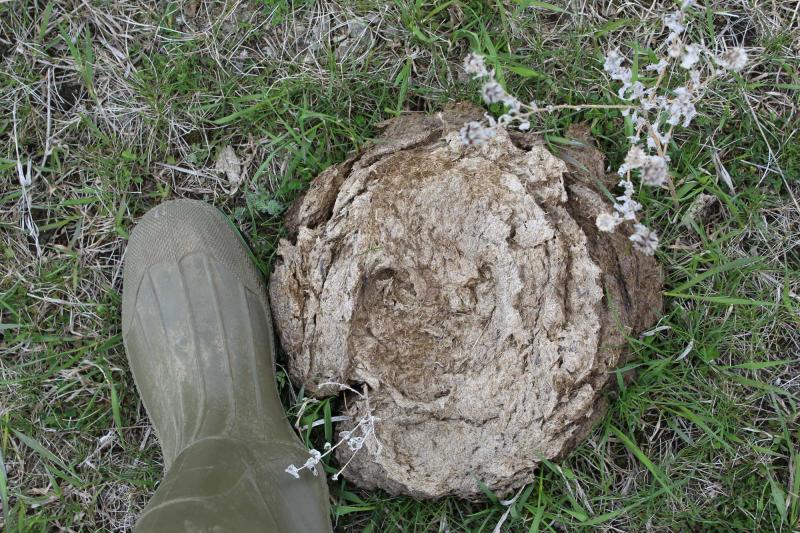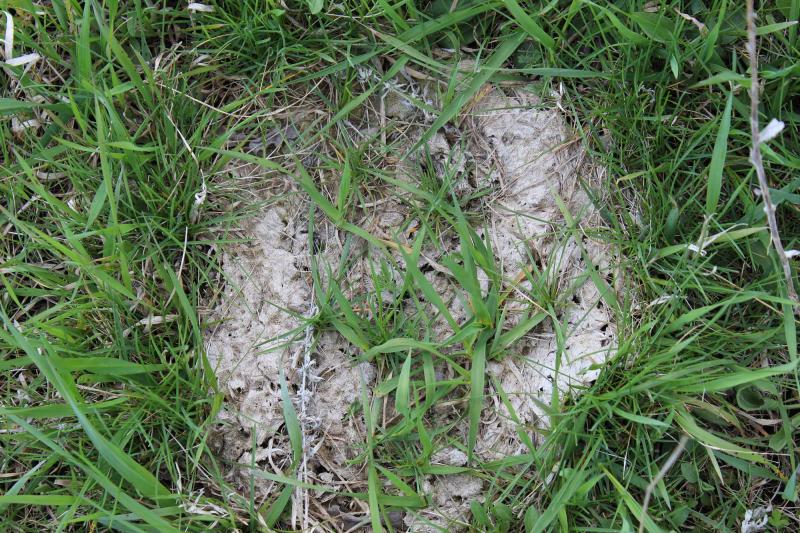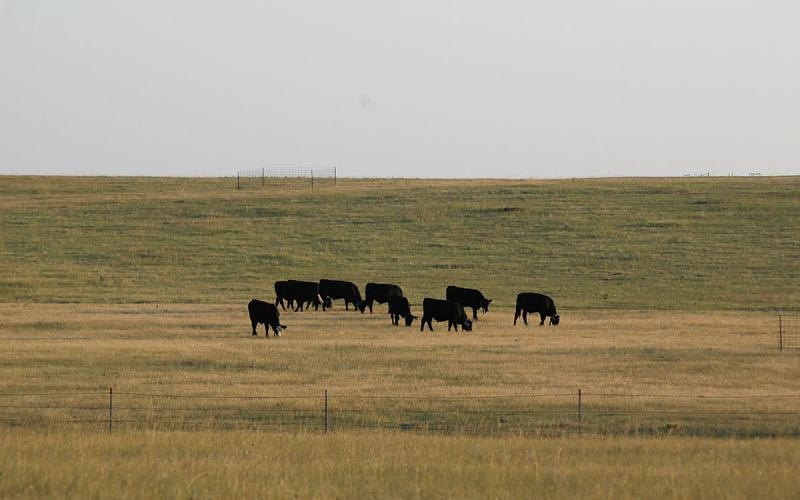Researchers have taken a closer look at the function of dung beetles in Eastern South Dakota over the last few years. This article summarizes findings related to dung beetle ecology and how dung beetles advance the breakdown of dung pats.
In this study researchers simply wanted to understand more about dung beetles and the larger arthropod community that utilizes dung pats, and how those communities impact the dung. For comparison purposes, researchers built cages to keep insects and other users away from certain dung pats as a means of control while allowing full access to other dung pats as a means of measuring impacts. Ultimately, as would be expected, caged dung pats significantly reduced both arthropod use and the speed of decomposition of the dung pats whereas the uncaged dung pats that were exposed to the full suite of arthropods broke down much more quickly. The total number of arthropods using the dung in this study remained fairly constant between early and late sampling, but the biomass of those arthropods was nearly twice as much in the early sampling period than the later sampling. Generally, dung beetles and other arthropods utilized more dung pats earlier in the grazing season than later.
Dung can support a great variety of arthropods, and the presence of arthropods that colonize the dung advances the breakdown of the dung pats. This study found that an incredible array of arthropods use dung to some extent. Nearly 87,000 specimens (13 orders of arthropods including insects, spiders, millipedes, and the like) were collected. Dung beetles made up about 3% of all arthropods in the early season summer sampling, and reduced to about 1.5% in later sampling periods. Predator species tended to increase during the grazing season while parasites, herbivores, and maggots decreased in relative abundance from the early to later season. While only making up a relatively small portion of the overall arthropod population, dung beetles were central to the overall use of the dung pat by the entire arthropod community.

The breakdown of undigested material in dung pats is important to grassland health, and dung pats that do not degrade can hinder grassland productivity by smothering living plant material and can impact forage consumption for up to 5 meters around the residual dung pat (Figure 1). Nutrients such as nitrogen, potassium, and phosphorous can be lost or run off when dung is not incorporated into the soil in a timely manner. Consequently, timing, temperature, and seasonality of the forage base is important to overall dung breakdown.
Generally, in both early and late season more arthropod use was found in ‘younger’ pats between 2 and 7 days old versus ‘older’ pats between 14 and 42 days old, and those younger dung pats were broken down more quickly, with about 28% of their wet weight lost during the first 2 days, likely due to the early presence of dung beetles. The dung beetles colonize the new dung pats and feed on the liquid portion of the dung. When water becomes limited, they move on to other dung pats, leaving behind tunnels and often their eggs in or underneath the dung. As the dung beetle larva develop, they feed on the drier fibrous portion of the dung pat.
As dung is deposited, early inhabitants such as dung beetles utilize the more liquid portions of the dung pats for foraging and depositing eggs. As the dung dries out a ‘wave’ of predators tend to move into the dung pat foraging on the maggots or young of the earlier inhabitants. Temperature can affect how quickly arthropods colonize a dung pat and the rate of degradation of the pat. Early season, cooler temperatures may slow the evaporation of water from dung pats, whereas later season heat can more rapidly dehydrate a dung pat, reducing the time it is attractive to the arthropod community. Also, the change in the plant community over the grazing season from cool-season species to warm-season species can change the palatability and digestion of the pasture forage and thus can change the composition of the dung.

Overall, dung beetles can have a significant impact on the rest of the arthropod community and how the dung breaks down. Other species of arthropods such as spiders and other predators can utilize the dung beetle tunnels as well as they seek out larva of pest insects. These tunnels provide the opportunity for air to reach the interior of the dung pat and advance degradation as well, creating opportunity for vegetation to grow up and through the dung pat (Figure 2). Overall, dung pat degradation increased by about 30% when the dung pats were utilized by the entire suite of the insect community.
Presence of dung beetles in particular can help suppress livestock pest species such as certain flies by making the dung pats less hospitable to the eggs and maggots. Ranchers may want to consider these factors in an attempt to keep dung in a state that is most attractive to dung using arthropods.


